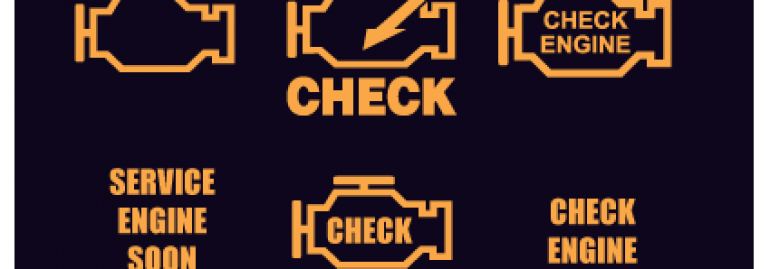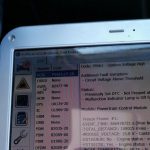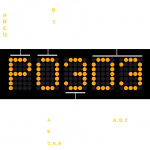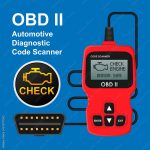There are many reasons why your car may be displaying Diagnostic Trouble Codes (DTCs) instead of an error message. In this article, you’ll learn more about DTCs, their types, meanings, and the Scanners that are available to check for them. Ultimately, you’ll be able to tell if something is wrong with your car and take action to fix it. Listed below are some common reasons why your vehicle may display these codes instead of an error message.
Diagnostic Trouble Codes (DTCs)
What are Diagnostic Trouble Codes? Diagnostic trouble codes are a list of error messages that your car is sending to the onboard computer when there is a problem. These codes identify issues with your car before it fails completely. Unfortunately, DTCs do not always tell you what the problem is. For example, if your cylinder misfires, a P030X code will come up on the dash. While that information is extremely helpful, the system is not flawless. Still, it gives you a huge advantage when it comes to repair and maintenance.
A good diagnostic tool should have a database that contains all DTCs for any vehicle. These databases are available online and allow you to find specific codes for your car. Ideally, your car service manual will tell you what system, circuit, or component to check. Using a service manual is also helpful when you need to replace a certain part. Sometimes, you may not need to replace the part, but need to replace a certain wiring or another component.
To identify the source of a DTC, you need to know the type and make of your vehicle. If your vehicle is J1939 or OBD-II compliant, you can use the manual provided by the manufacturer to determine which codes are present. Most DTCs aren’t critical, but some require immediate attention. You can also use a scan tool to determine the code’s meaning. This software will also tell you what type of engine your car has.
If you have a Type C DTC, you need to check that your ECT sensor is properly connected. If not, you may need to replace it. You can also check that the temperature of your engine coolant circuit is within the proper range. However, you should always visit a mechanic to have it diagnosed properly. A diagnostic tool is an important investment that you should have installed. But, if you want to avoid spending hundreds of dollars on a car repair, try RepairSmith. You can find affordable replacement parts through ASE certified mechanics.
Types
There are several types of OBD codes. These codes are the result of malfunctions with your vehicle’s electronic control unit. The first one is called a generic code, and the second one is a manufacturer-specific code. This type of code is common to most car manufacturers. A generic code will typically show a fault message that is common to most vehicles. Manufacturer-specific codes, on the other hand, are specific to the vehicle’s make and model.
Modern vehicles use the OBD system to detect problems, and their own internal computer reports these problems via the OBD code. Two types of codes are used by different manufacturers, OBD1 and OBD2. There is also a difference between OBD1 and OBD2. The former uses proprietary connectors that can be difficult to read, and the latter uses a standard ice plug (a trapezoid-shaped device).
The output circuit of the computer may be faulty or the computer output circuit may be bad. A vehicle may also display the EVAP code, which tells you whether it has a problem with its EVAP system. The EVAP system helps to keep gas fumes from reaching the atmosphere. Other codes, such as idling and speed controls, monitor the transmission. Faulty computer systems or a malfunction of the transmission may trigger the EVAP code.
Understanding how to interpret OBD codes is essential for diagnosing a car problem. There are different types of codes, and understanding each type is critical to getting a solution. For example, an obd code that indicates a problem in the air conditioning system could be a sign of a more serious problem with the engine. In either case, a technician must perform additional diagnostics before making any repairs.
Meanings
OBD codes, also known as on-board diagnostics (OBD) codes, are symbols that tell the mechanic what the problem is with a vehicle. The Society of Automotive Engineers developed the system, and selected standard codes for most problems. These codes are referred to as generic codes, and some manufacturers have added their own, referred to as manufacturer-specific codes. Typically, an OBD code will begin with a letter, such as P0 for powertrain and ‘P2’ for transmission. The last two digits of the code designate a particular fault designation.
When you first see an OBD code on your car, you may be confused as to what it means. But you can get help from a website that specializes in interpreting these codes. This website is written by Richard, a developer with over 20 years of experience in SEO, website development, and online marketing. He graduated from University of Birmingham with a degree in Computer Science, and has built custom software for companies like Samsung and ASDA. He has also written for TechRadar, Tom’s Guide, and Creative Bloq.
If you’ve ever noticed a malfunction in your car, you’re probably familiar with OBD2 trouble codes. These are part of your car’s self-diagnostic system, and they are used to indicate a problem with a vehicle. The problem that the OBD code indicates is the source of the problem. You can learn about the codes and their meanings by using a comprehensive fleet management solution.
OBD codes are full of mysterious letters and numbers that indicate a general problem with your vehicle. The codes are also known as “diagnostic trouble codes.” These codes are displayed on the dashboard of your car and tell you what the problem is. For example, the P0201 code indicates that a malfunction in the injector circuit in cylinder one is causing an OBD error. To learn more about these codes, check out the information on OBD code websites.
Scanners
The first thing you need to consider before buying an OBD code scanner is what information you want to receive from it. Some models are better for certain systems than others. You also need to consider how much functionality you need from the scanner. There are basic scanners, which can be helpful if you’re having trouble with your ABS light. But you can’t get the best results from a cheap scanner – you’ll need something more advanced.
If you want to get the most accurate information possible, choose an OBD code scanner that is compatible with the model of your car. Some models require you to enter the details of your car in the menu. Moreover, some models have a menu called Codes, which will give you more accurate information. The more details you enter, the more accurate the scanner will be. However, there are some exceptions to this rule, and you should always be aware of these.
A good OBD code scanner should come with an intuitive interface. It should display the data on its screen. After booting up, you can access the menu. On some scanners, you need to enter your VIN, which is located on the driver’s side of your vehicle. Some may also have menus for other systems. In the menu, you can find live and pending codes. These codes are indicative of a malfunction, but they don’t mean that your car is in danger of crashing.
The ELM327 wireless scanner is one of the cheapest OBD code scanner solutions. It can be purchased for under $20. Just make sure you configure the device to be connected to your car. It’s a good way to get started reading trouble codes with a low-cost scanner. You can also buy a scan tool with more features than the basic code reader. And remember, the better quality the scan tool, the more accurate your results will be.
Apps
When looking for a free app to read OBD codes on your car, the options are many. BlueDriver, for example, uses a Bluetooth OBD2 sensor to read car data in real-time. Torque, on the other hand, offers several functions, including a fault memory. Carly, by contrast, has a plethora of features that make it the best app for reading OBD codes on your car.
EOBD Facile is a free app for the iPhone and iPad that can help you read OBD2 codes on your car. You can check for trouble codes in real-time, as well as view diagnostic data on charts. The app’s menu is easy to navigate and has a large, easy-to-find button for clearing trouble codes. Depending on the type of code, you can even learn how to fix it yourself.
The free version of the OBDroid app allows you to scan fault codes using a Bluetooth connection to an OBD-II interface. With this app, you can view information such as the engine’s speed and airflow, calculate fuel economy, and reset Check Engine warning lights. The app also comes preprogrammed with error code descriptions. The alOBD ScanGenPro app can record real-time sensor data, store fault codes, and export specific vehicle parameters. Users may be able to customize the app to collect data based on their needs.
OBD Fusion is a free OBD2 reader app, developed by California-based OCTech. It pairs with a generic plug-in ELM 327 scan tool to read OBD code faults. Using an OBD II Bluetooth adapter, this app can also record engine data and perform advanced diagnostics. It is popular among hobby mechanics and car enthusiasts alike. The free version has a wide range of features and is compatible with Android and iOS smartphones with software system configurations 6.0 or later.






